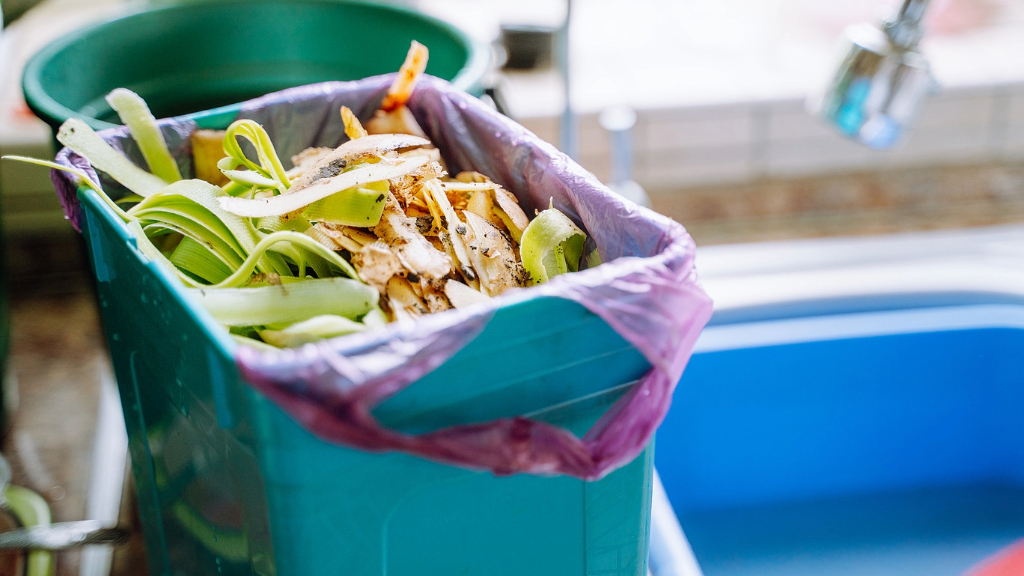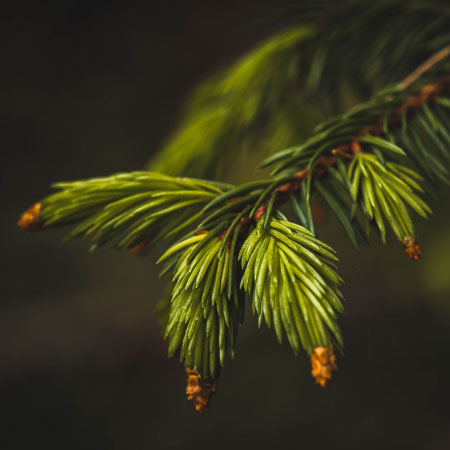The Trash Can Compost Bin


We all want to be greener, healthier and wiser, but we don't have to break the bank to do it. Here's my garbage can composter. It's simple, chic and wallet friendly, not to mention, a good family project.
To Build a Trash Can Compost Bin
- A plastic or metal garbage can; it must have a locking lid
- A drill
- A hole saw bit for metal doors - I used the size for the peep hole
- Three or four cinder blocks - they should have holes for drainage
If you're getting help from the kids or other enthusiastic family members, its best to put a piece of 2"x4" in the can so it doesn't accidentally get crushed. Even the metal cans can still be bent back into shape, but the lid might not lock as securely as you'd like. The hole saw bit cuts easily through either the plastic or metal with little resistance. To make, simply cut holes all around the can, including the bottom and the lid. We had the kids paint the can afterwards as an art project. Make sure the lid keeps a secure lock. Use cinder blocks for proper drainage into the soil.
Using Your Homemade Composter
To use, just take it out to your garden and dump in a thin layer of soil, then add your kitchen scraps and other compost material. Each time you add your kitchen scraps, shredded newsprint, sawdust, etc, add another layer of soil. Do not add manure, as this unit does not heat sufficiently enough to biodegrade pathogens. Hey, if you have a fish tank (as long as it's NOT salt water) every time you clean it, take the waste water and pour it into the barrel - it will add more nutrients to the compost. The great thing about this composter is that you get to move it each season so you don't saturate the ground in any one area. I used mine in my tomato beds one year and had fantastic results with heritage Beefsteak tomatoes. Once in a while you should stir it up"”I used a hoe, but only after it was half way full. It can dry out in the summer, but again, adding fish tank water, creek water, rain water, or tap water will fix that problem. Depending on the weather, it will take four to eight weeks to break down standard kitchen, lawn and garden waste. You know how much waste you produce. I found that once I filled the composting can about three or four times, I just left it, stirred it once or twice a month, then worked it in after I cleaned the bed up in the fall (my family of four actually needs three units for the year).
Handy Uses
This unit can be used in the winter, not for composting, but for compost storage. Basically, you have three or four units put somewhere, not too close to the kitchen, but where you can access them all winter. For the winter, only use metal bins. We found that plastic garbage cans warp in the winter, and can crack and shatter if filled too much. During the winter, you or one of your helpers dumps the household compostable matter daily. For this, I bought a square wastebasket that just fits the paper bags from grocery stores. They are completely biodegradable. Just fill and dump, but be careful of the wet stuff. Roll the top and flip the contents to the dry materials and send out to the compost cans. In the spring, once everything has thawed enough, slide out the contents. Once you've set up your beds and composting areas, you can just shovel the now thawed contents back into the composting cans or add to your compost pile. Because it was previously frozen, the waste breaks down very fast. It does need a lot of air - if you're shoveling the contents back into the cans, you must stir to aerate it. But it is worth it. If it starts to smell and you realize that it's gotten kind of slimy, just add dry organic matter and stir. This doesn't mean you need to have a bale of straw on hand, (though that would work fine), just add extra untreated wood chips, dry grass clippings or extra shredded newspaper. If you get night time visitors, it's important that the composter is on solid footing, or else it can (and will) fall over. I used four cinder blocks, which worked fine. My friend has used four bricks, and even though she had to dig them out in the fall, she felt they worked just fine.
Have Fun with this Project!
The garbage can composter makes a great project for kids to make and paint (adults, of course, are responsible for drilling the holes), and it makes a fun garden gift for family and friends! Just remember, never add shiny magazine type paper, computer paper (it's treated and can be toxic), or meat. Sure, you can compost meat and cat and dog waste (if municipal laws allow it), but you need a larger area, and a managed compost pile needs a minimum of eight feet square by six feet high to get hot enough to properly break down the waste. However, for a smaller project like this, it's great for your kitchen scraps and suburban back yards. Remember to have fun and enjoy your green spaces!
Gardening tips, videos, info and more delivered right to your inbox!
Sign up for the Gardening Know How newsletter today and receive a free copy of our e-book "How to Grow Delicious Tomatoes".

Chris Molnar is a sponsored content writer for Gardening Know How.
-
 Try The Trend – Turn Any Bed Into A Keyhole Garden With This Clever In-Ground Composter
Try The Trend – Turn Any Bed Into A Keyhole Garden With This Clever In-Ground ComposterKeyhole gardening is an efficient and sustainable practice that saves space. Get started on this DIY project quickly and easily with an in-ground composter.
By Bonnie L. Grant
-
 4 Superfast Composting Methods: Turn Waste Into Garden Gold In 30 Days Or Less
4 Superfast Composting Methods: Turn Waste Into Garden Gold In 30 Days Or LessTry the fastest composting methods to turbocharge your pile and transform kitchen scraps and garden waste into finished compost in just a few weeks.
By Mary Ellen Ellis